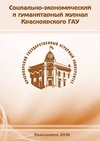For ensuring survival of the enterprise in modern conditions the admin-istrative personnel needs, first of all, to be able to estimate really an econom-ic condition of both the enterprise, and the existing potential competitors. As a rule, the aspiration of the enterprise management of maximizing profit at-tracts the risk of loss of liquidity. The analysis of solvency and profitability of the enterprise allows revealing mistakes in economic activity, reserves of growth and helps the enterprise to carry out the activity more successfully. Research objective is the definition of priorities in management of liquidity and profitability of the agricultural enterprises. The achievement of this goal requires the solution of the following tasks: considering theoretical aspects of profitability and liquidity; carrying out the analysis of liquidity and prof-itability of the concrete enterprise; predetermining priorities of financial management of the studied enterprise in the current period. During research various methods were used: monographic, system approach, abstract and logical, settlement and constructive, etc. During the research different views on the content of the concept "financial state" were made into a whole, they are in the lack of uniform approaches to treatment and private concepts: solvency, liquidity, financial stability, etc. Carried-out analysis of liquidity (in interrelation with financial stability) and profitability of the studied en-terprise allows defining the priority directions of financial management on this time span. At positive dynamics of indicators of profitability the enter-prise has low level of liquidity which causes the necessity of adoption of the administrative decisions directed on the balance of these indicators. Consid-ering the current situation, priorities of financial management in the current period of functioning of the enterprise are questions of providing an opti-mum level of liquidity.
liquidity, solvency, profitability, financial stability, man-agement
1. Matanceva O.Yu., Popova L.P. Finansovaya ustoychivost' - da, bankrotstvo - net! // Auditorskie vedomosti. - 2014. - № 10. - S. 85-90.
2. Saakova E.B., Saakov A.S., Bartkova N.N. Optimizaciya struktury kapitala organizacii kak instrument antikrizisnogo upravle-niya. Effektivnoe antikrizisnoe upravlenie. - M., 2013.
3. Savickaya G.V. Analiz effektivnosti i riskov predprinimatel'-skoy deyatel'nosti: metodologicheskie aspekty. - M.: NIC INFRA-M., 2014. - 272 s.
4. Kir'yanova Z.V., Sedova E.I. Analiz finansovoy otchetnosti: ucheb. dlya bakalavrov / Gos. un-t upravleniya. - 2-e izd., ispr. i dop. - M.: Yurayt, 2014. - 428 s.
5. Kovan S.E. Finansovaya ustoychivost' predpriyatiya i ee ocenka dlya preduprezhdeniya ego bankrotstva // Ekonomicheskiy analiz: teoriya i praktika. - 2014. - № 15. - S. 52-59.
6. Ionova A.F., Selezneva N.I. Finansovyy analiz. Upravlenie fi-nansami. - M.: YuNITI-DANA, 2012. - 639 s.
7. Efimova O.V. Finansovyy analiz. Sovremennyy instrumentariy dlya prinyatiya ekonomicheskih resheniy: ucheb. - M.: Omega-L, 2014.
8. Rubleva T.A. Aspekty antikrizisnoy politiki obespecheniya ustoy-chivogo razvitiya predpriyatiya // Zhurnal pravovyh i ekonomiche-skih issledovaniy. - 2013. - № 1. - S. 205-210.








